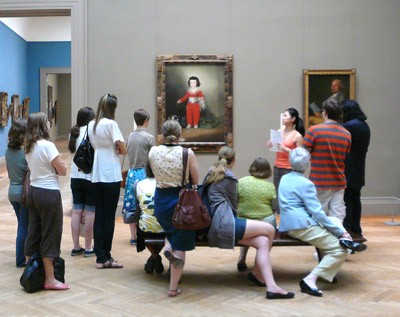Art History at Columbia

To study the history of art at Columbia University is to join an enterprise that extends far beyond Morningside Heights. Perhaps more than any other undergraduate major, art history is tied to the cultural life of New York City, where more people are engaged in making, writing about, exhibiting, and collecting art than any place else in the world.
Whether it is devoted to Roman sculpture, Japanese ceramics, or French painting, a class in art history at Columbia brings students into direct contact with works of art in the city's museums and galleries, while classes in architectural history introduce students to the staggering diversity of its buildings and public monuments.
Like New York City, the art history curriculum encompasses many different cultures. It is also interdisciplinary in its scope, encouraging students to explore the central role of the visual arts on religion, politics, gender relations, urbanism, and in all other domains of human experience in which works of art inspire, disturb, or energize the imagination.
The Department of Art History was founded in conjunction with special resources in archaeology and architecture at the Avery Memorial Library, as inspired by great European traditions of archaeology, connoisseurship, and iconology. Well before recent advances, Columbia art historians transcended the geographical and cultural boundaries of the West.
Since Paul Wingert expanded the Department's curriculum in the 1930s, coursework in the study of the arts of Africa, Oceania, Native America, the Near East, and East Asia has been a staple of the Columbia University curriculum, and like Columbia's great teachers of the past—Meyer Schapiro, Rudolf Wittkower, Robert Branner, Howard McP. Davis, Julius Held, Howard Hibbard, Edith Porada, and William Bell Dinsmoor—today's faculty continue to apply art historical methods to illuminate particular works of art, even as they place their works in the broadest cultural context.
